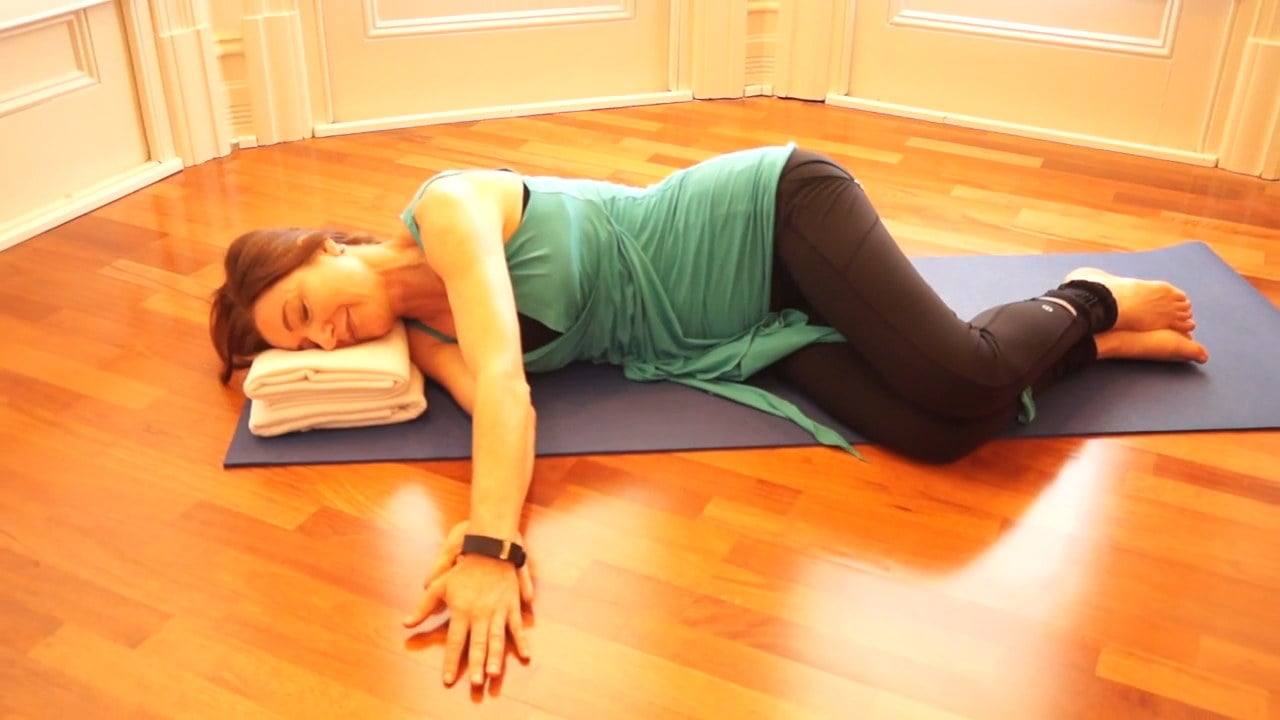Your cart is currently empty!
Tag: feldenkrais
-

Finding Symmetry: Neck and Back Release
In this lesson you will lie on a blanket roller, gently exploring movements of the two sides of the body in a way that helps to improve your flexibility and symmetry while normalising muscle tone and releasing tension in your neck, back and all along your spine. I find it really helps me sense my central axis more clearly, improving my posture and alignment.
-

Improving Posture

Improving Posture
Have you ever tried to improve your posture? How well did that work for you? If you are not satisfied with the results, consider attending Feldenkrais classes. The Feldenkrais Method can help you achieve comfortable and effortless posture through ingenious and mindful movement exercises.
The changes become integrated into your every-day life. Soon you will find yourself sitting, standing and moving in ways that you never imagined could be so easy or comfortable.
Body Scan Exercise in Sitting
Sit on a firm chair with your feet flat on the floor. Come forward in the chair a bit so you are not using the back rest. Sit normally and close your eyes for a few moments. Notice your posture. Stay there for a minute or two just observing yourself. Then open your eyes again.
When you observed your posture, what is the first thing that came into your awareness? What parts of the body did you sense? Perhaps you thought about whether you were sitting or standing up straight? You might have become aware or your head, neck and back. Perhaps you sensed your spine and checked its alignment. Maybe you tried to correct yourself. These are things many of us were taught to do growing up.
Consider that parts of your body that may not have been included in your awareness. Your hands and feet? Your chest and rib cage? Was your abdomen free to move with the breath? How long could you sustain this posture comfortably
3 minutes to Better Posture
Now try this short exercise with Ruthy Alon. Then go back to the sitting body scan above and feel the difference.
About Ruthy Alon
Ruthy is an international Feldenkrais trainer who studied and taught with Moshe Feldenkrais for over 20 years. It is hard to believe that in this video she is 85 years old. Ruthy is still teaching, a huge inspiration for those of us interested in healthy ageing.
4 Reasons why trying harder to sit or stand up straight doesn’t work
1. When we try to straighten the spine we often increase effort in the muscles of the back without releasing the flexor muscles in the front of the body. The result is one muscle group working against another. This causes spinal compression.
2. Some of us work so hard in our back muscles to maintain good posture that we end up bowed backwards, thinking that we are actually straight. This ‘military’ style of posture can lead us to be stiff and stuck in our movements. People who do this are usually unaware of it.
3. A common frustration in trying to improve posture is that the changes only work while you are consciously paying attention. As soon as you stop doing that, you slip back into old habits.
4. Yet another problem with this method is that the effort to straighten can result in restriction of the breathing.
4 Ways that Feldenkrais helps improve posture
1. Focusing on dynamic, not static posture
Moshe Feldenkrais described good posture as ‘the ability to move equally easily in all directions’. This is dynamic posture. By contrast, static posture may involve trying to hold yourself still when you are sitting or standing. This may cause breath holding. It’s also literally impossible be completely still. We actually maintain our balance in upright positions by using subtle swaying movements.
2. Reducing effort
As you learn where to let go of unnecessary effort, you will discover how to find more efficient support from your muscles and bones. Learning to move easily in and out of a particular position is just as important as maintaining good alignment.
3. Learning first while lying down
To learn a new way of supporting the body against gravity Moshe Feldenkrais first taught a variety of movement lessons lying down. The reason is that lying down makes it easier to reduce muscular effort. This helps you sense what you are doing more clearly so you can make small adjustments towards greater efficiency. It means you are less likely to fall into inefficient habitual patterns and postures.
4. Expanding the self-image
In the Feldenkrais Method you will learn to bring your attention to each part of the body that is involved in an action. You will learn how even seemingly unrelated parts of the body such as your hands, feet, eyes, ribs and hip joints can influence your posture. The more parts of your body that can be included in your self-image, the more clearly you will know what you are doing. In the words of Moshe Feldenkrais ‘When you know what you’re doing you can do what you want’.
“When you know what you’re doing you can do what you want” – Moshe Feldenkrais.
-

Relieve Lower Back and Hip Pain with Feldenkrais
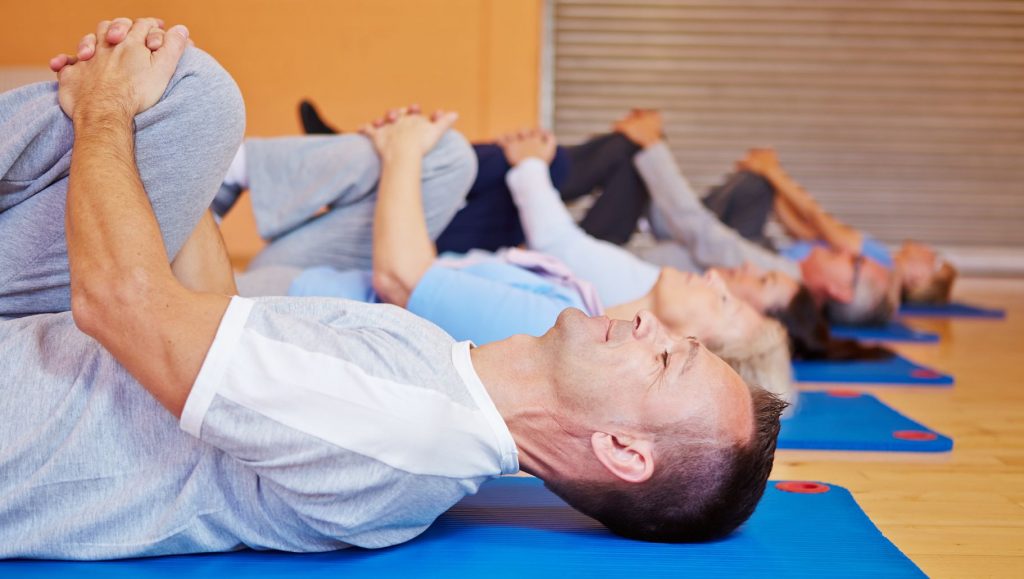
Relieve Lower Back and Hip Pain with Feldenkrais
Exercising with Lower Back or Hip Pain
Lower back and hip pain can make it hard to exercise. The alternative – not exercising – can lead to increasing weakness and stiffness, with a tendency to gain weight.
Even if you have already tried other forms of exercise without success, Feldenkrais is different. The focus during the movement classes is on learning to sense your body movements more clearly. Increasing your awareness of your movement habits is the key. That’s why Moshe Feldenkrais called the classes ‘Awareness Through Movement’
‘When you know what you’re doing you can do what you want’ Moshe Feldenkrais
How Feldenkrais Helps
By reducing effort and shifting your attention to the quality and smoothness of the movement, you discover new ways to move with comfort and ease. As you learn to let go of tight muscles, range of movement in your lower back and hips improves. You compare different movement options and discover what works best for your unique body. Better coordination and control of your muscles brings a sense of effortless power.
Help break the cycle of pain and tension in your lower back and hips by enrolling in our regular Feldenkrais Classes in North Perth. All classes are run by a qualified Feldenkrais Physiotherapist.
READ MORE about Feldenkrais Classes.
-

Theme for Feldenkrais Classes Second Term 2017
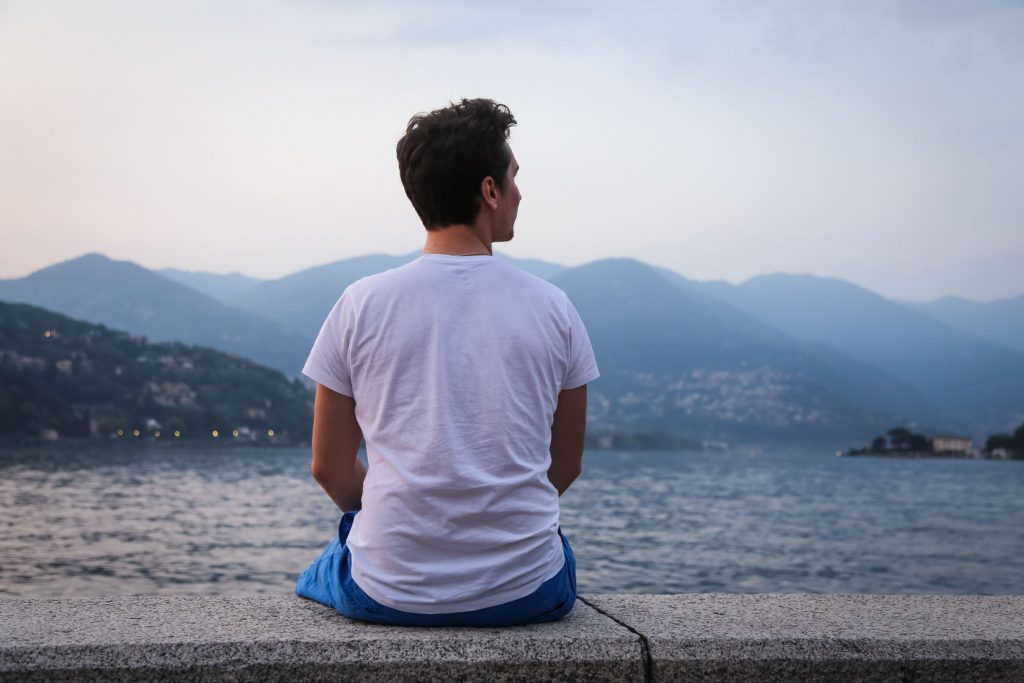
Theme for Feldenkrais Classes Second Term 2017
Alison’s Class Theme
Saturdays at 10:00 am
Moving on from last series freeing the neck and the jaw to twisting and turning without effort.
Jodie’s Classes Theme
Mondays at 6 pm and 7pm, Tuesdays at 9.30am, Thursdays at 10.30am
This term the focus is on power without effort. We will be exploring the bodies natural ‘movement physics’, paying attention to the bodies hinges and levers.
The aim will be to create more energy efficient movement.
-

Feldenkrais and Insomnia

Feldenkrais and Insomnia
The Problem of Insomnia
Insomnia (difficulty sleeping) is incredibly frustrating experience. Discomfort while lying down can not only hinder your ability to fall asleep but also rob you of genuinely deep sleep. Sleeping in an awkward positions can lead to waking up sore and uncomfortable in the morning. The tiredness and discomfort can haunt you throughout your entire day. Worrying about getting enough sleep only makes it worse. Does this sound familiar?
How Feldenkrais Can Help Insomnia
Sometimes insomnia may be caused by a medical condition. It’s important that you discuss this possibility with your doctor. However often insomnia is caused by a busy mind and a tense body. Feldenkrais helps you to bring the mind and body into a relaxed, harmonious and settled place, ready for sleep. Some exercises can even be done while you are lying in bed.
In Feldenkrais classes you will learn some quick and simple exercises you can do every day to improve sleep. You will also participate in some longer ‘Awareness Through Movement’ lessons that help you to let go of pain and tension.
During a class you will lie on a comfortable padded mat, close your eyes and tune into your body. As you are guided through a gentle series of exercises, it’s easy to let go and wind down from the stresses of the day. You learn to quickly and easily bring your mind and body into balance. This helps promote a deeper and more restful sleep.
Feldenkrais helps develop your ability to focus your mind on your body in a relaxed and non-judgmental way. Letting go of focusing on sleep itself and softly resting the attention on the body and the breath helps to overcome a restless mind and tense body.
Feldenkrais also helps you expand your options for comfortable sleep positions. It achieves this through gentle mindful movement explorations.
-

Patellofemoral Pain

Patellofemoral Pain
By Alison McIntosh
Patellofemoral pain (and patellofemoral dysfunction) are a common causes of pain felt at the front of the knee. This pain originates from the joint between the patella (the kneecap) and the femur (thigh bone).
The patella usually glides/ tracks through the patella groove on the femur during flexion and extension of the knee. Compression is a natural component of this movement however an increase in the compressive force at this joint can result in patellofemoral pain. This can be caused by an alteration in the position of the patella (interfering with its smooth tracking during knee movements). An altered position of the patella is commonly a result of quadriceps (front thigh muscle) imbalance.
The most common imbalance occurs when the pull of the outer quadriceps muscle (Vastus Lateralis) is too strong compared with the pull of the the inner quadriceps VMO (Vastus Medialis Obliquus) which is often too weak. If the lateral structures of the knee (Iliotibial band and Retinaculum) are very tight this adds to the problem, which is known as ‘patella maltracking’.
Common signs and symptoms of patellofemoral pain:
- Pain underneath the kneecap
- Knee pain with rising to standing from a seated position
- Knee pain associated with prolonged knee flexion (eg sitting in the movies/ on an plane)
- Knee pain with climbing and particularly descending stairs
- Knee pain with running , hopping, squats, lunges
Common causes of patellofemoral pain:
- Over pronation of the feet ‘dropped arches’ as a result of
- poor foot wear (inappropriate arch support)
- a genetic pre-disposition (possibly a family history of hypermobility ) or
- as a result of poor gluteal strength (important in maintaining a neutral lower limb alignment)
- Over loading of the joint as a result of
- biomechanics (one stronger more dominant limb)
- occupational causes
- sporting limb dominance
- Recent changes to an exercise regime i.e.
- recent commencement of running
- alteration of fitness regime to include squats, lunges, hill or stair training
- recent increase in intensity of a training program
Diagnosis:
A diagnosis of patellofemoral pain or patellofemoral dysfunction is usually made without the need for medical imaging. A physiotherapy assessment will frequently involve:
- Specific orthopaedic testing of the patello femoral joint
- Biomechanical analysis
- Gait analysis
- Functional testing of the knee, ankle hip and pelvis
- Knee ligament testing to aid in identifying any additional knee ligament or cartilage involvement
- Hip and lumbar spine testing to aid in identifying any referred pain
- Functional assessment to determine strength/balance/alignment
Treatment:
The first aim of treatment is usually to reduce pain in the short term. At Free2Move we frequently use a patient specific combination of the following modalities
- Acupuncture
- Soft tissue massage
- Joint mobilisations
- Taping
- Neuro muscular re-education through the Feldenkrais Method
- Foot wear advice and arch support taping
- Exercise/training modification
Secondly, treatment of patellofemoral pain would aim to restore efficient bio-mechanics, improve function and if required focus on sport specific rehabilitation. This may be achieved using:
- Feldenkrais Method
- Clinical Pilates
- Patient specific home exercise program ultimately aiming to reduce the likelihood of any re-occurrence of the problem
-
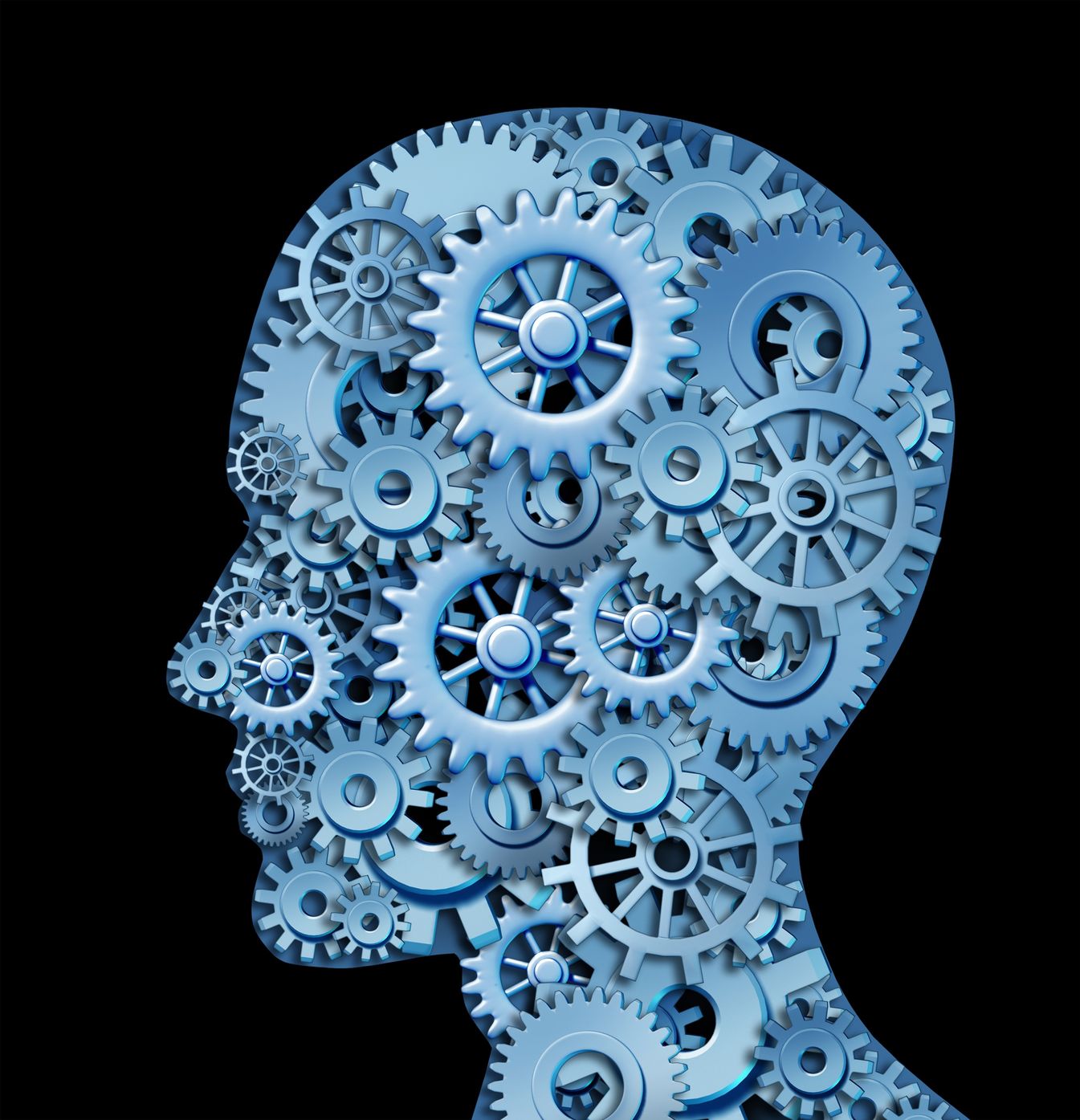
5 Ways Feldenkrais Supports Mental Health

5 Ways Feldenkrais Supports Mental Health
The Feldenkrais Method is not just helpful for improving your physical health and well-being, it also supports your mental health. Your brain is essential in thinking, feeling (emotional health) and sensing via the 5 senses.
All movement is initiated via the brain and nervous system. When you improve the way you move you simultaneously improve your thinking, feeling and sensing, because you are actually changing the way your brain and nervous system is wired. Improvements to your brain function and mental health happen gently and with minimal effort on your part.
“What I’m after isn’t flexible bodies, but flexible brains. What I’m after is to restore each person to their human dignity. ” – Moshe Feldenkrais
So what are 5 ways that Feldenkrais can help support your mental health and overall well-being?
1. Developing mindfulness, concentration and attention supports mental health
During a Feldenkrais awareness through movement lesson you are guided to closely observe and mentally follow your body during both stillness and movement. This process gently focuses on body sensations and improves your kinaesthetic sense while developing relaxed concentration. Once engaged in the process thoughts and worries about the past and future are set aside. Improving mindfulness is known to help improve mental health.
2. Self-care: Learning to listen to your inner needs supports mental health
Feldenkrais lessons help you remember how good it feels to listen to your body sensations without forming judgements. You learn how to become more comfortable in your own skin. You start to realise that letting part of your awareness to attend to your inner experience need not reduce your effectiveness in the outside world, in fact it can enhance it.
3. Improving physical and mental habits supports mental health
Through Feldenkrais you discover that you have your own unique patterns of physical tension which are closely interwoven with the way you feel about yourself and the world around you. These patterns are simply neuro-muscular habits and habits can be changed. Instead of fighting against the tension or seeking to get rid of it, you learn to go with it. The habit, which may have been invisible then becomes obvious and you begin to discover that you have other options.
“When you know what you’re doing you can do what you want” Moshe Feldenkrais
4. Slowing down supports mental health
In Feldenkrais it’s not so much in the movements themselves that matter, its the way in which you do them. By going in slow motion you are able to observe things you would not otherwise notice about the quality of your movement. Practicing the component parts slowly gradually leads to more efficient movement patterns. Then the movements can then be done fast without losing efficiency. Going slowly allows you to more accurately map movements and your body’s position in space as it changes over time and creates more detailed and accurate mental maps of your body in your brain. This slow movement is a great antidote to the regular pace of life.
5. Learning to reduce effort supports mental health
Often we equate high achievement with hard work. However over-efforting can often interfere with efficiency. Trying hard and doing your best are not always the same thing. What if you could do more with less effort? How can you achieve the results you want without wasting effort or energy? These are questions we commonly explore within the context of Feldenkrais lessons. Rather than giving you answers we encourage you to engage with the question and guide you to discover your own answers. In this way the Feldenkrais Method supports autonomy and taking charge of your own physical and mental health.
The thing is, reading about Feldenkrais is like reading about the ocean when you’ve never been there. You really need to experience it for yourself, not just read about it. So we warmly invite you to come for an individual consultation or enquire about a trial class. If you don’t live in Perth, you can still access our free YouTube Videos via this site.
-
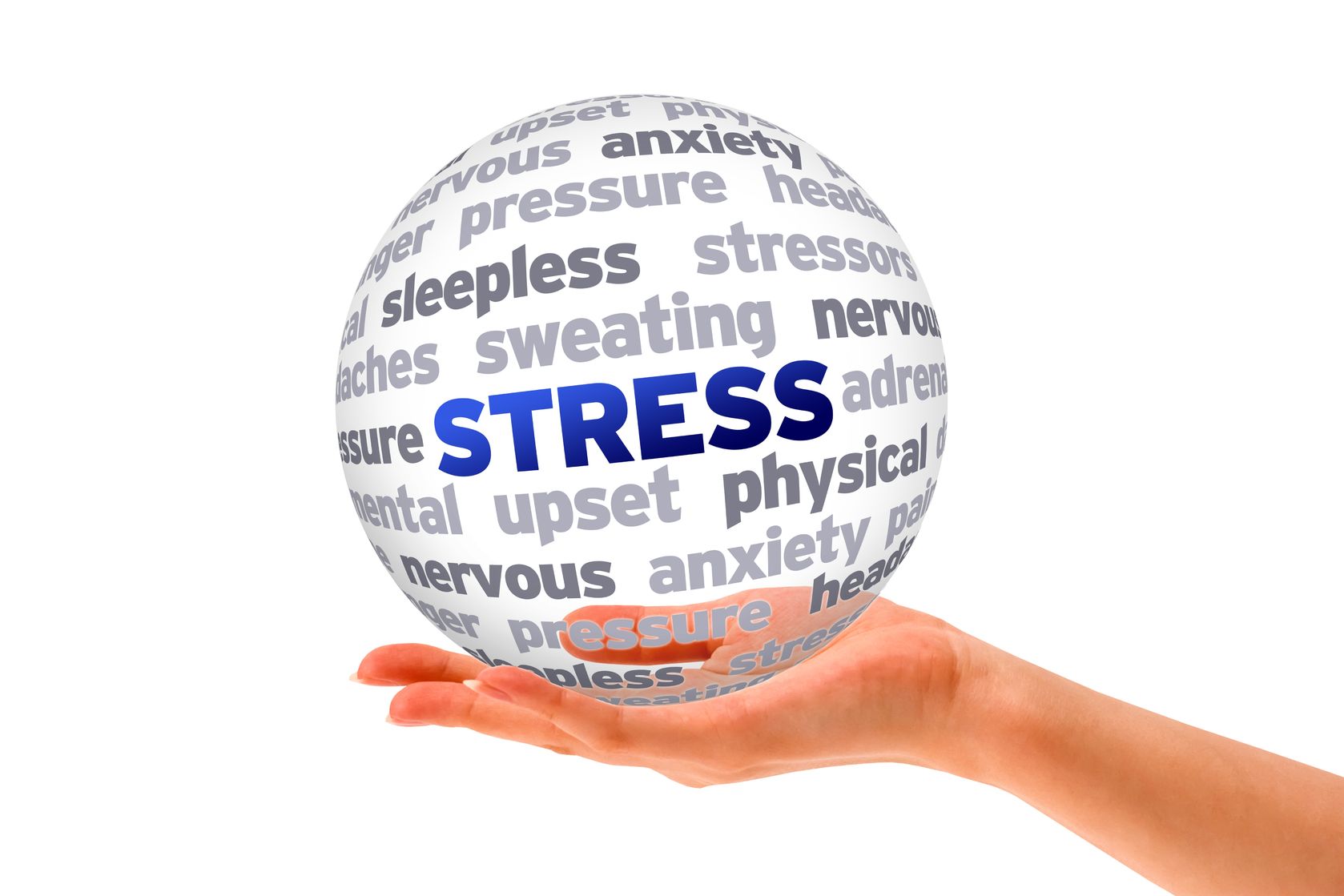
Feldenkrais for Stress and Anxiety
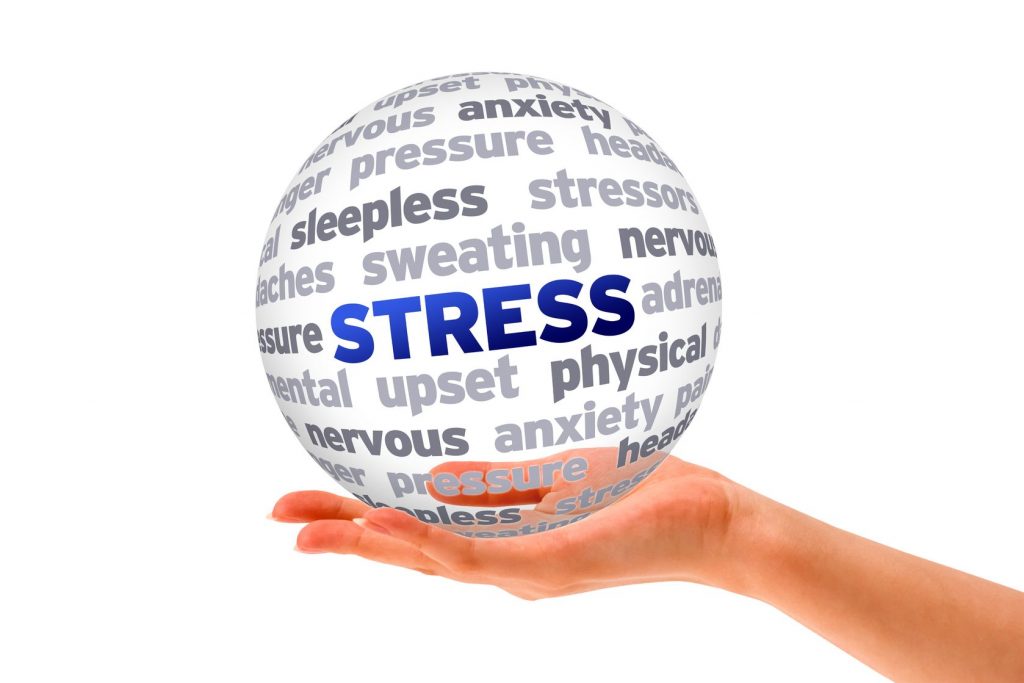
Feldenkrais for Stress and Anxiety
By Jodie Krantz
To improve our mental health we need to become more mindful of what is going on inside our bodies, not just in the world around us. Feldenkrais can help with this.
This week I started teaching a series of awareness through movement lessons for psychiatric inpatients at the Marion Centre, Perth Western Australia. This small private psychiatric hospital provides a rehabilitation service for people experiencing difficulty functioning in everyday life. I’m currently a volunteer at the hospital. I’m working in conjunction with a clinical psychologist and two occupational therapists.
Seeing people at such a low point in their lives has made me reflect on why more people need to know about the Feldenkrais Method. This method of learning to move more easily can improve your mental health as well as your physical health.
Developing skills to reduce stress, manage anxiety and improve mood has never been so important. According to the Australian bureau of statistics forty five percent of Australians experience mental health problems at some stage during their lives.
Anxiety is the most common form of mental illness in Australia and is the leading cause of disability in the world. Depression and mood disorders are also common. People with chronic pain (persistent pain) have a substantially increased risk of developing anxiety or depression.
Group work, relaxation training and various forms of physical exercise have long been known to assist in the management of mild to moderate anxiety and depression. The Feldenkrais Method combines mindfulness, movement and relaxation, all of which can help reduce stress, while improving many aspects of mental functioning.
Much of our lives are spent on autopilot. We respond in a stereotyped and habitual way to daily circumstances. Some of these responses are useful and but many are sub-optimal. Often we’re doing one thing but thinking about another thing. We rush from one activity to the next, desperately trying to multitask in order to achieve more in less time. We think of this as efficiency but the speed at which we live our lives is causing many of us to reach breaking point. Those who are most resistant to slowing down are often the ones who need it the most. Australian poet and cartoonist Michael Leunig has some funny but wise words to share with us on ‘restlessness‘ in Mr Curly’s letter to Vasco Pyjama!
During the course of an average day many of us spend a great deal of time tending to the tasks and demands of everyday life, while ignoring the body’s messages. For example we may go for long periods of time slouching in an uncomfortable chair, wearing a bra that constricts our breathing or shoes that hurt and damage our feet. Some of us habitually continue eating after we are full. Others become so preoccupied that we ignore our need to go to the toilet or get a drink.
“I believe that the unity of mind and body is an objective reality. They are not just parts somehow related to each other, but an inseparable whole while functioning. A brain without a body could not think. ” Moshe Feldenkrais
The thing is, reading about Feldenkrais is like reading about the ocean when you’ve never been there. You really need to experience it for yourself, not just read about it. We welcome you to call or email us today to enquire about a trial class or book an initial assessment. If you don’t live in Perth, you can access our free YouTube videos to begin your Feldenkrais journey.
-
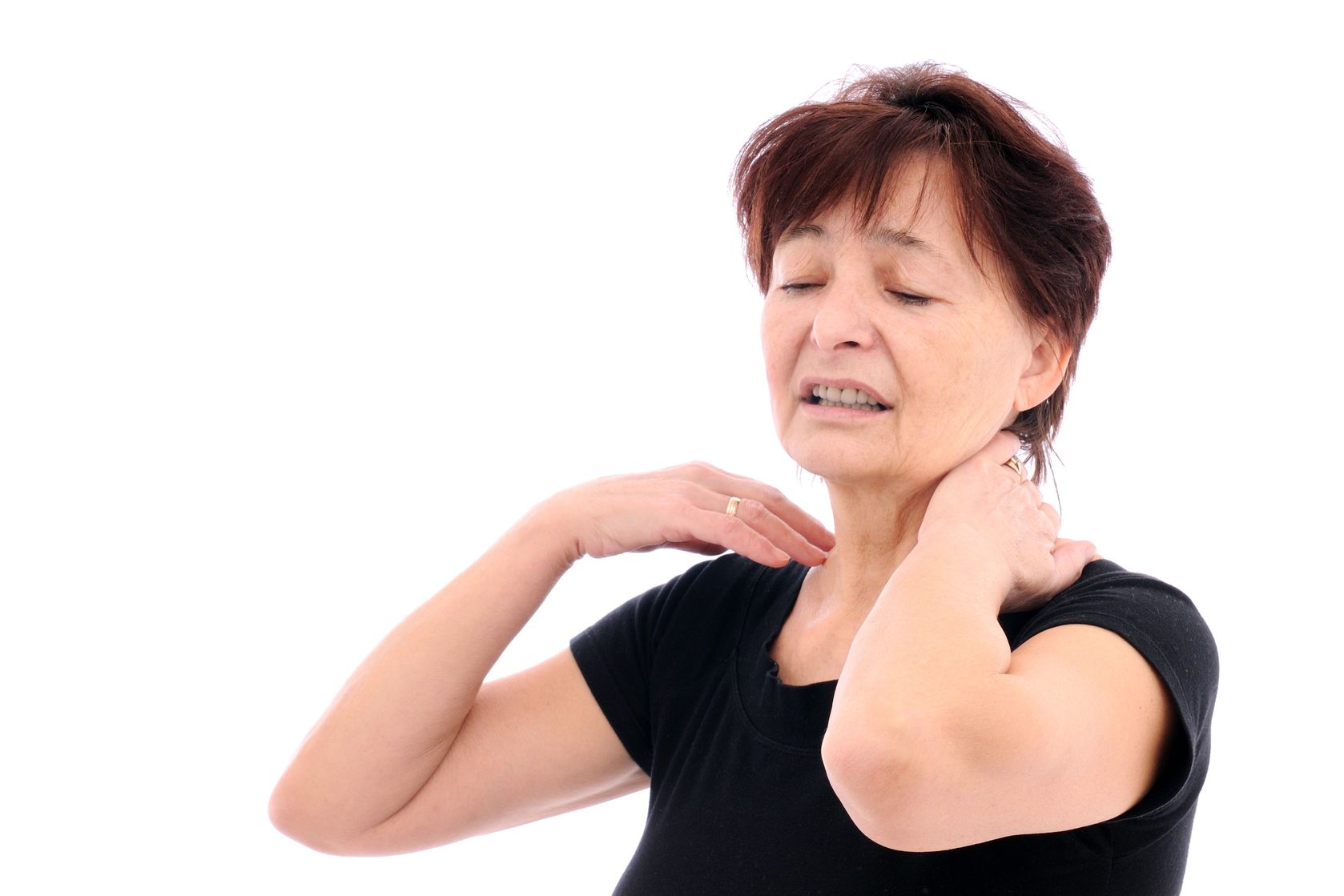
Feldenkrais for Fibromyalgia
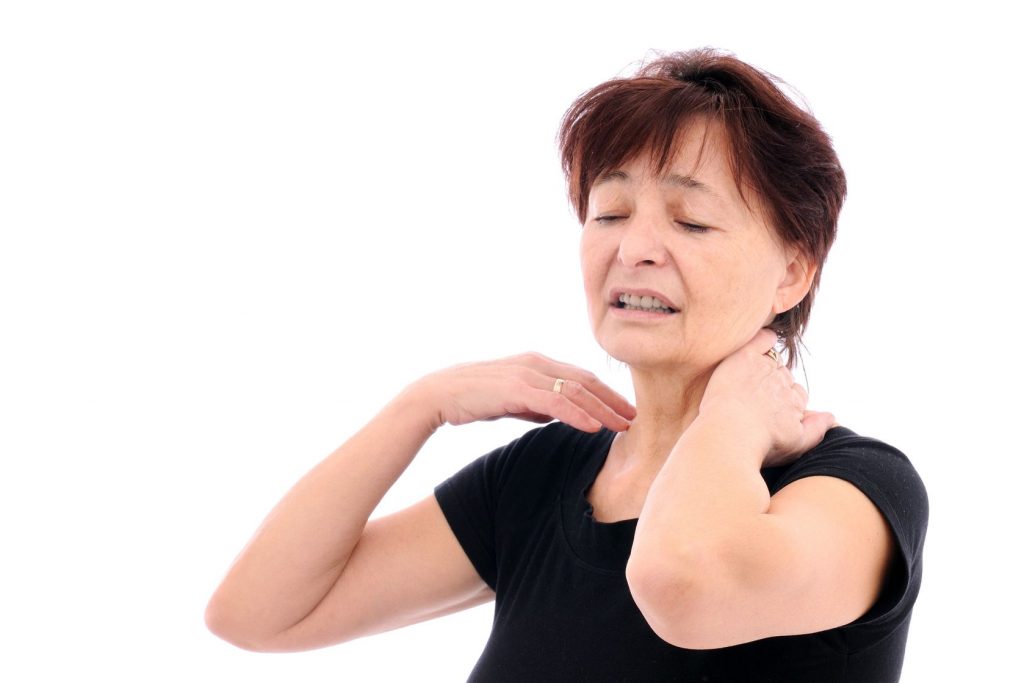
Feldenkrais for Fibromyalgia
How Feldenkrais Can Help Fibromyalgia
The Feldenkrais Method is a way of changing your habits in order to make movement easier, more comfortable and more enjoyable (while making your brain more flexible). Feldenkrais rhymes with ‘rice’ and is named after it’s inventor, Dr Moshe Feldenkrais. Read more about Feldenkrais here.
 Hello, my name’s Jodie and I’m a Physiotherapist with over 25 years experience in working with people who have chronic pain, including many people, past and present, with Fibromyalgia. Read more about my work experience.
Hello, my name’s Jodie and I’m a Physiotherapist with over 25 years experience in working with people who have chronic pain, including many people, past and present, with Fibromyalgia. Read more about my work experience.If you are battling with daily pain and fatigue, I can truly empathise. I used to laugh about the fact that I seemed to have had pain in every part of my body. I figured that it helped me develop new forms of self-treatment that I could teach my clients. I also felt that it made me a more compassionate therapist.
However it was a strange surprise when a few years ago I was diagnosed with Fibromyalgia myself. Since my mid 30s I have used Feldenkrais, Pilates, diet, exercise, massage, medication and meditation to help deal with variable daily pain and fatigue. My rheumatologist suggested that the reason that my Fibro has not stopped me from having an active and satisfying life is simply good management. So now I am on a mission to share with you the things that have worked for me over the years.
Although I have tried many approaches, the Feldenkrais Method is by far the most effective and powerful tool I’ve discovered to help with the persistent and sometimes severe pain of Fibromyalgia.
Over the years, I have seen many people with severe pain and movement difficulties turn their lives around using Feldenkrais. One client who had not experienced even one minute without pain for over 20 years did Feldenkrais with me for 3 months before he experienced his first 2 hours of being pain free. The pain-free periods gradually got longer and more frequent. After one year he was pain free most of the time. When he experiences pain now he knows how to find his way out of it again using the Feldenkrais Method.
This leads me to share with you 6 reasons why the Feldenkrais Method and is so suitable for many people with Fibromyalgia:
- Encouragement – a sense of relaxation and wellbeing is often experienced from the very first time you do a movement lesson and the enjoyment makes you want to continue
- Slow gentle pace – the slow mindful movements make it safe and help avoid flare-ups,
- Energy conservation – the focus is on efficient movement and reduced effort – imagine how much more energy you would have if you could bring this approach to everything you did!
- Flexibility and adaptability – each person is unique and different, and the exercises are easily adapted to your particular situation and needs
- Prevention – you become more sensitively tuned into your body so that you realise more quickly when you are doing something that will end in pain later
- Autonomy – you can learn to do Feldenkrais for yourself, reducing the need for hands-on treatment
No matter what your pain is like, how long you’ve had it, or how severe it is, almost everyone can improve their pain by improving their movement. The latest neuroscience suggests that the pain in Fibromyalgia, is not due to a problem in the tissues themselves, but to a dysfunction in the way the brain and nervous system transmit and interpret pain signals. This results in an increase in sensitivity to pain and to pain amplification.
The movements in Feldenkrais can help to decrease pain and improve your ability to perform everyday activities. The gentle, mindful movements send new and different messages to your brain through pleasant sensations, changing the way your brain and nervous system function. You begin to understand how some of your movement habits may not be working for you and you discover new options. This is a learning process which includes your whole body and your mind, not just the parts of you that hurt.
If you’d like to learn more, you can view video of a talk I gave to the Fibromyalgia Support Network of Western Australia. This includes a short Feldenkrais ‘Awareness Through Movement’ lesson you can try while sitting in a chair.
As you may be able to tell, I’m passionate about the Feldenkrais Method, so I hope you will feel free to contact me at Free2Move if you have any questions or if you’d like to book in for an individual Feldenkrais appointment.

